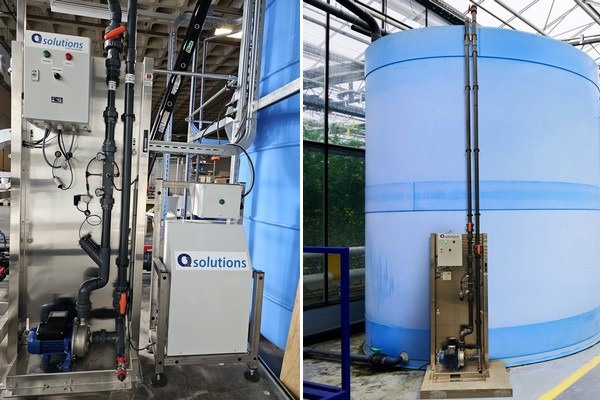Two years ago during the HortiContact exhibition in The Netherlands, O2Solutions launched a new generation of nanobubble systems developed specifically for applications within greenhouse horticulture. Now, two years later, the successful concept is proving more successful than expected, shares Cees den Haan.
"Applying nanobubbles to increase dissolved oxygen levels in irrigation water has become a standard rather than an exception. It is applied in almost all crop types where there is always a crop benefit."
Cees cites growers' main goals as increasing oxygen levels, cleaner pipes, increased water quality through the light oxidation effect, a healthier root environment, and disease suppression. "The further development of our nanobubble technology has focused on efficiency, simplicity, and long-term reliability resulting in affordability."
Practice proves it
Testing the nanobubble systems is only possible at the practical level, Cees believes. "Lab tests that do not take into account the water composition within greenhouse farming are commercial capstans. EC, fertilizers, organic pollutants, temperature, and presence of salts have a major influence on the performance and generation of the number of nanobubbles in the water and thus also affect the solubility and stability of oxygen in the water."
Over the past year, two field tests (in Europe and the US) have tested the performance of the Triton nanobubble system in comparison with existing technology. "The starting point of the test was to maintain the dissolved oxygen level at an average value of 17ppm at the crop."
The results were remarkable and clear. Cees: "Our nanobubble system managed to keep the dissolved oxygen level at an exact value of 17ppm during the test, while with the old technology, this level dropped to 10ppm for 2 months due to fouling in the nanobubble generator. With chemical cleaning of the membranes in the nanobubble generator, it returned to its value only to have dropped back to 10ppm after 2 months due to fouling. This appears to be a known recurring problem of the existing old nanobubble technology."
Both trials were conducted in 2024. The trial in California, in the US, was carried out at a pepper farm with coco substrate where nanobubbles had been used for several years and a Triton system from O2solutions was added this spring. In the Netherlands, the trial was carried out on a lettuce crop on water. More details about the trial can be seen here.
 Photo left: a system for trial lettuce cultivation with water. Picture right: Triton system in California
Photo left: a system for trial lettuce cultivation with water. Picture right: Triton system in California
O2 Solutions developed two models. According to Cees, the top model, the Triton, stands out from other systems in addition to the point from the field tests because installation is possible 'like an Ikea self-build kit'. In addition, energy consumption is 50 percent lower and the investment is also 30 to 40 percent lower.
International
O2Solutions is a product that falls under the Hortispeed BV group. This group also includes ECOfilter and Agrozone products with branches in the Netherlands and Canada.
For more information:
Cees de Haan
Hortispeed BV
[email protected]
www.O2solutions.eu
www.Hortispeed.nl
